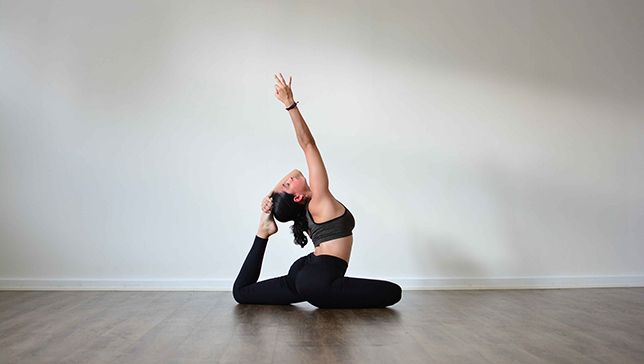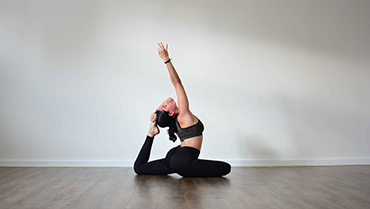One-Legged King Pigeon Pose B - Eka Pada Rajakapotasana B

Contents
One-Legged King Pigeon Pose B, or Eka Pada Rajakapotasana B (eka “one” + pada “foot or leg” + raja “king” + kapota “pigeon” + asana “pose”), is an advanced pose that can be quite a challenge for yoga beginners. It requires a lot of flexibility and strength from the body. This pose is preferably performed at the end of the session to be warmed up. One-Legged King Pigeon Pose B is similar to its twin sister Eka Pada Rajakapotasana A with a slight variation. It is a great pose for the hip flexor muscles, digestive tract, and posture.
Pose Detail
- Difficulty: Advanced
- Body Position: Backbend Yoga Poses, Seated Yoga Poses
- By Type: Chest Opening Yoga Poses, Flexibility Yoga Poses, Hip Opening Yoga Poses, Shoulder Opening Yoga Poses
- By Benefit: Yoga Poses For Stress Relief
Step-by-Step Instructions
Benefits and Contraindications
Stimulates abdominal organs
Stretches the hamstring, groin, thighs and shoulders
Boosts energy
Builds strength in the back.
Neck injury, knee, shoulder
Menstruation and pregnancy
Migraines
Photo poses in different angles

Modifications, Props and Tips
- You can perform this posture with props to help you find your balance and gain strength in the pose. Come into the pose with a wall behind you so that the shin of your back leg presses slightly into the wall.
- You can also place a block – at its lowest height – under the foot of your front leg to ease the strain on the front knee.
- Then you can reach back and eventually grab your back foot behind you with your forearms pressing into the wall as well. Gradually you can work on pressing your pelvis down toward the floor.
Variations
- One-legged King Pigeon Pose A
- Reclined King Pigeon With A Strap
- Upright King Pigeon Pose